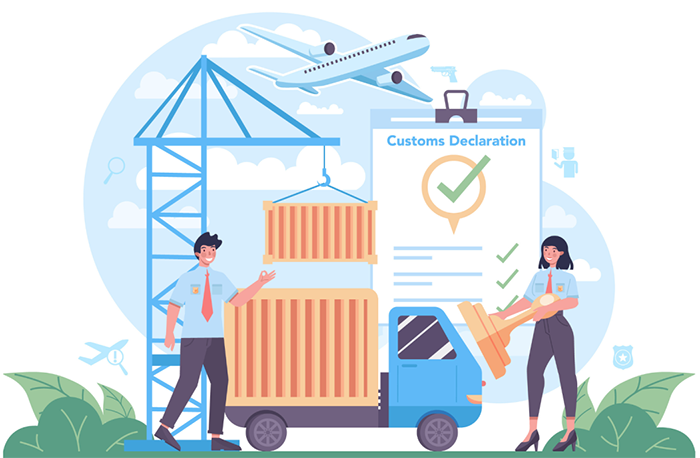Duty drawbacks are an essential component of custom clearance services, offering businesses the opportunity to reclaim certain duties paid on imported goods that are subsequently exported. This mechanism serves as a cost-saving measure and enhances the competitiveness of businesses engaged in international trade.
Understanding Duty Drawback Scheme
Eligibility Criteria
To qualify for duty drawbacks, businesses must meet specific eligibility criteria set by customs authorities. These criteria may include demonstrating that imported goods were subsequently exported, providing evidence of duty payment, and complying with regulatory requirements.
Types of Duty Drawback
There are two main types of duty drawbacks: drawback of customs duties and drawback of excise duties. Customs duty drawback involves reclaiming duties paid on imported goods upon their exportation, while excise duty drawback pertains to reclaiming excise duties paid on certain domestically produced goods that are subsequently exported.
Benefits of Duty Drawbacks
Cost Savings
One of the primary benefits of duty drawbacks is cost savings for businesses engaged in international trade. By reclaiming duties paid on imported goods upon their exportation, businesses can reduce their operational costs and improve their profit margins.
Competitiveness Enhancement
Duty drawbacks enhance the competitiveness of businesses in the global market by lowering the cost of exported goods. This enables businesses to offer competitive prices, penetrate new markets, and expand their customer base, thereby strengthening their position in the international trade arena.
Application Process for Duty Drawbacks
Documentation Requirements
Claiming duty drawbacks requires meticulous documentation, including import and export invoices, bills of lading, customs declarations, and proof of duty payment. Businesses must maintain accurate records to substantiate their claims and comply with customs regulations.
Submission and Approval Process
The process of claiming duty drawbacks involves submitting a drawback claim to customs authorities along with supporting documentation. Customs authorities review the claim and verify the eligibility of the goods for drawback before approving the claim and issuing a refund or credit to the importer.
Challenges in Claiming Duty Drawbacks
Administrative Burdens
The process of claiming duty drawbacks can be administratively burdensome for businesses, requiring extensive documentation and adherence to complex regulations. This can pose challenges for businesses, particularly smaller enterprises with limited resources and expertise.
Compliance Complexity
Compliance with duty drawback regulations can be complex, as businesses must navigate multiple requirements and regulations to qualify for drawback benefits. Failure to comply with regulatory requirements can result in delays, penalties, or denial of drawback claims, adding to the administrative burden for businesses.
Duty drawbacks are a mechanism that allows businesses to reclaim certain duties paid on imported goods that are subsequently exported, serving as a cost-saving measure in international trade.
Duty drawbacks benefit businesses by reducing operational costs, enhancing competitiveness, and improving profit margins through the reclaiming of duties paid on imported goods upon their exportation.
The application process for duty drawbacks involves submitting a drawback claim to customs authorities along with supporting documentation, which is then reviewed and verified before approval and issuance of a refund or credit to the importer.
Documentation requirements for claiming duty drawbacks include import and export invoices, bills of lading, customs declarations, and proof of duty payment, among others, to substantiate the claim and comply with customs regulations.
Businesses may face challenges such as administrative burdens, compliance complexity, and regulatory requirements in claiming duty drawbacks, which can impact the efficiency and effectiveness of the process.
- Bonded Warehousing & Distribution
- Clearance under EOU/SEZ/EPCG/Advance License
- Clearance Under Wireless Planning Committee (WPC Licence)
- Duty Drawbacks
- Export Clearance under various Schemes
- FTWZ (Free Trade Warehousing Zone) Services
- Import Customs Clearance
- Pre & Post Import Consultation
- SVB (Clearance Under Related Party Transaction)

